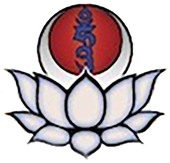Some Thoughts on Buddhism, Offered by a Student of Tibetan Buddhism
The person we now call the Buddha was born Siddhartha Gautama in the fifth century B.C.E. near what is today the India/Nepal border. He was a prince of the Sakya clan. When he was in his 20’s the suffering (Skt. dukkha) he saw outside the palace walls, the absence of a happiness that had any kind of stability, caused him to leave the royal compound and become a wanderer and seeker, studying with Indian spiritual masters and dedicating his life to understanding the nature of suffering and its causes. If the causes could be understood, then a path to ending the cycle of suffering, of dukkha, could be found. After years of contemplation and meditation he sat down under a bodhi tree in northeast India, at a place now called Bodhgaya, and vowed not to get up until he found the answers to the questions he had. He was 35 years old. Sitting there in meditation, he realized on an experiential level the actual nature of reality and the true nature and capacity of mind — an expansive, unbiased and deeply compassionate awareness.
Buddha is a Sanskrit word that means, “One who is awake”. In English this is called enlightenment. The first words the Buddha spoke after these realizations were: “I have found a dharma like ambrosia — deep, peaceful, simple, uncompounded, radiant.” He had found the causes of suffering and the path to its cessation. For the next 45 years, until his death at the age of 80, the Buddha taught about the path to this awakening.
Tibetan Buddhism teaches that every sentient being has the same innate nature as the Buddha — the same expansive, radiant awareness, the same natural capacity for compassion. The purpose of every Tibetan Buddhist practice, from the simplest meditation to the highest vajrayana practice, is to give us greater access to the actual nature and capacity of our own minds. That innate nature and capacity of mind has been covered over and obscured by habitual and reactive thought patterns, negative emotions and karmic imprints created by past actions. The root cause of all of this is a fundamental ignorance about the way things actually exist.
The Dalai Lama often notes that it took science 2,500 years to catch up to Buddhism. He was talking about quantum physics and the idea that there is no “there” there — that things are not solidly or inherently existent, but rather patterns of energy and flow. For 2,500 years Buddhism has called this sunyata, a Sanskrit word that has been translated into English as emptiness. Emptiness doesn’t mean that things don’t exist. It means they don’t exist the way we think they do.
From this ignorance or delusion about the way things exist we fabricate the idea of a solid, inherently existent “I”. All of our problems — our negative emotions, our fears — are caused by our grasping at that “I”, a construct rooted in fundamental ignorance. There are two truths in Buddhism — an absolute or transcendent truth and the relative truth of our lived experience in the everyday world. Even on the level of our everyday lived experience, the way we exist is not as some fixed, solid and inherently existent “I”. It is more like a river, with that sense of flow. One Buddhist writer put it this way:
A living being is a temporary combination of various elements, always changing, just as a river is composed of uncountable drops of water, never remaining static even for the smallest imaginable moment of time. The sense of continuity we have from day to day, which we experience as a static state of being, is really a dynamic process, a continuous flow. There is simply no need for a “self”, we function perfectly well without it. We are that flow, that dance of life, without fixation or solidity.
Luminous Emptiness, pp. 34-35 (Fremantle 2003).
The path to clearing this fundamental ignorance about the nature of reality and of our own existence, and to removing the obscurations that come from that ignorance, is a path of study, contemplation, practice, and meditation. In Tibetan Buddhism, it is through meditation that the understanding gained by study and practice is deepened and integrated on the level of direct experience.
The practice of meditation is not the same in all Buddhist traditions. In Tibetan Buddhism it is engaged in for specific purposes as a way of working with the mind. The foundational meditative practice is shamatha, through which our monkey minds learn to settle and become familiar with single-pointed concentration. Once stability in shamatha is established, insight meditation, or vipassana, can begin to open. The highest level of meditation is mahamudra, resting in the actual nature of mind, free of all obscurations. The visualization practices of vajrayana are also meditative practices.
In Tibetan Buddhism this is the mind of awakening. Soha.
